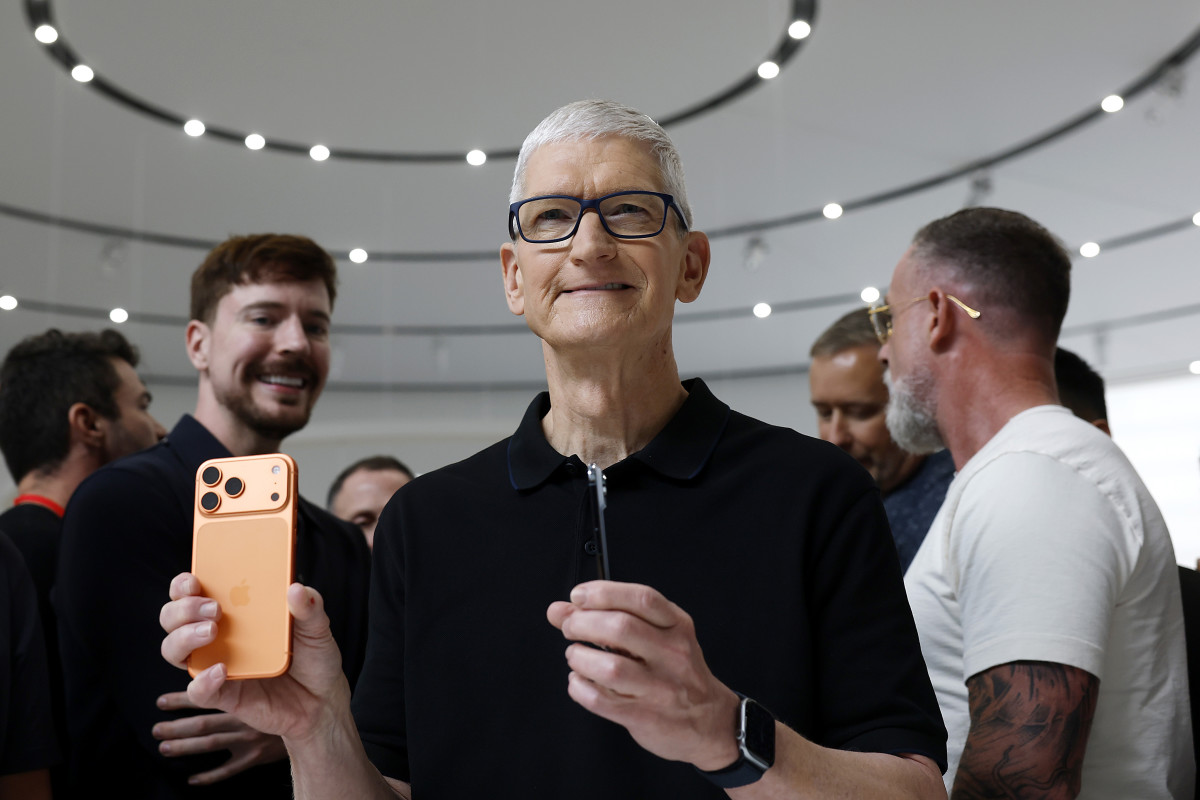In many ways, Apple’s (AAPL) 2025 story has been one of quiet resilience.
Despite sluggish global smartphone demand, the world’s most valuable business was able to find new ways to bend the curve.
Its success had everything to do with supply-chain recalibrations, a steady premium mix, along with the soft power of ecosystem lock-in, pushing Apple towards growth, when most of its peers remained stuck in the mud.
Nowhere was that more evident than in Greater China.
Following a relatively rough patch early in the fiscal year, Apple was able to claw its way back to growth, posting a 4% year-over-year bump in sales from the region in its fiscal Q3 results.
CEO Tim Cook hailed it a “very positive” quarter, crediting revitalized iPhone demand for the stellar comeback. Needless to say, the iPhone remains mission-critical for Apple, since it still accounts for roughly 50% of its annual sales, and China continues to represent about 16% of total sales.
Still, the path ahead hasn’t been smooth. Local brands are encroaching, while price wars are intensifying, which significantly impacts Apple’s once effortless dominance in Asia.
That’s why Cook’s latest visit to China on October 14, 2025, was anything but ceremonial.
It wasn’t about photo ops or factory tours, but seemed more about sending a signal designed to quietly recalibrate Apple’s footing in arguably its most important market.

Image source: Justin Sullivan/Getty Images
Tim Cook sends a dual-pronged signal in China
Tim Cook isn’t just looking to sell iPhones; he’s selling connection.
His latest, much-talked-about trip to China felt less like an executive routine and more like a cultural campaign, choreographed to supercharge Apple’s momentum in the region.
In Shanghai, Cook met with Pop Mart CEO Wang Ning and artist Kasing Lung, the creator of “Labubu,” a viral figurine among Gen Z collectors.
More Tech Stocks:
- Musk’s Netflix boycott could actually hurt the streamer
- OpenAI’s deal with AMD proves AI race has just begun
- Goldman Sachs tweaks Nvidia’s stock price target with a twist
- The stock market laughed, then Palantir redefined the fight
Lung even gifted Cook a custom Labubu doll, which came with white fur, sneakers, and a tiny iPhone. In a playful gesture, Cook posted that the character “now has her own new iPhone 17 Pro in Cosmic Orange.”
Additionally, Cook visited Shanghai’s Pudong Apple Store to greet his fans, visited Lilith Games, and even connected with local pop star Wang Feifei on a music video set shot entirely on an iPhone 17 Pro. The China visit served as a kind of marketing masterclass wrapped in culture and Gen Z fluency.
An eSIM green light sparks Apple’s next China play
However, beneath all the soft power in Cook’s trip to China came a lot of substance.
His visit effectively coincided with Chinese regulators allowing eSIM functionality, enabling Apple to launch the iPhone Air, the company’s ultra-slim (5.6 mm) eSIM-only model.
Related: IonQ CEO just threw a curveball at Nvidia
The Ministry of Industry and Information Technology quickly approved commercial eSIM trials for China Mobile, China Unicom, and China Telecom, and Apple moved fast. Preorders for the ($1,120) iPhone Air are expected to open up on October 17, with shipments on October 22, roughly a month later than the worldwide rollout.
For Apple, that timing is critical.
It essentially means the entire iPhone 17 lineup, including Base, Pro, Pro Max, and Air, will hit China in time for the final quarter of the year. Rivals such as Huawei and Oppo are also racing to follow, but for now, Apple holds the first-mover advantage.
Apple’s iPhone 17 strategy delivers quiet strength in China
Apple is apparently doing what few thought possible: growing in a shrinking market.
China’s smartphone sector contracted 0.6% in Q3 2025, but Apple was somehow able to flip the script. The Cupertino giant shipped 10.8 million iPhones, a 0.6% year-over-year increase, landing it among the only three vendors to post growth, pushing its market share to 15.8%, just behind Vivo.
Related: Morgan Stanley revamps Broadcom’s price target with a twist
Analysts hail the multi-pronged strategy, which involves winning over value-conscious buyers with the base iPhone 17, while keeping others hooked with the bold,
premium Cosmic Orange iPhone 17 Pro.
IDC’s Nabila Popal summed it up perfectly, saying, “Apple cleverly segmented its iPhone 17 lineup to cater to different user needs, which drove a new wave of purchases.” Additionally, Omdia’s Chiew Le Xuan expects iPhone shipments in China to climb 11% in the second half of 2025, helping drive 5% full-year growth.
Related: Former Intel CEO drops curt 2-word verdict on AI
#Apple #CEO #sends #signal #crucial #China #moment